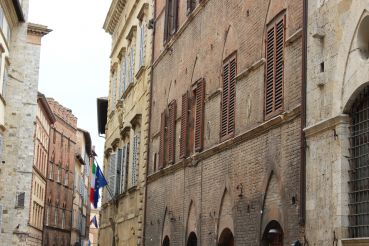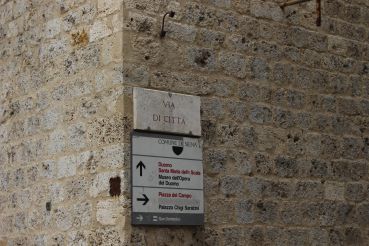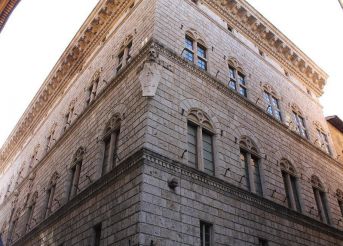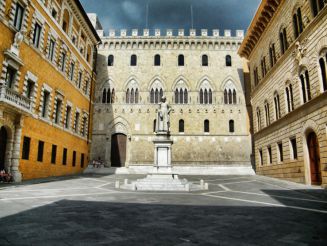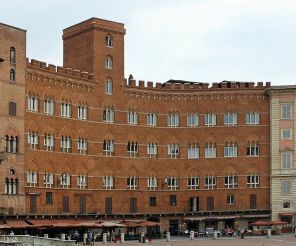Chigi Saracini Palace, Siena

Palazzo Chigi-Saracini decorates Via di Citta and belongs to local architectural monuments. The uniqueness of the building lies not only in its history, but also in its structure. Palazzo exactly coincides with every bend of the street. Nowadays, the Accademia Musicale Chigiana is flourishing in the building. In the palace, you can also visit a collection of works by Italian artists of the 16th and 17th centuries and an exhibition of musical instruments.
History of the palace
The three-story building was erected in Siena in the 12th century. Famous people of the city became the owners of the Palazzo Chigi-Saracini – the Marescotti family, related to the papacy. Therefore, even now, on the walls of the house, one can see an eagle with spread wings, which acted as a family symbol and symbolized the spiritual principle. Under their leadership, the house was expanded and acquired its characteristic feature – the bends.
The owners of this house did not change often. However, in the 18th century, the palace became the property of the Saracini family, and another 100 years later – the Chigi family. But all the property of the house has always remained inside.
Later, in 1932, the owner of the palazzo and Italian patron Guido Chigi-Saracini reconstructed the building. He turned it from a residential building into a music academy.
Having established an academy in a building that stretched across the street, Guido created a place in which workshops and lessons were held annually. It is noteworthy that only outstanding musicians shared their knowledge at the Accademia Musicale Chigiana. A lot of masters known on the world stage were among them. For example, Jacques Thibaud, Alfred Cortot, Yehudi Menuhin, Guido Agosti and others.
Since 1961, the palace was transferred to the musicians by Count Chigi, which led to the existence and work of the academy in our time.
It is worth mentioning that before the construction of the Palazzo Pubblico was completed, all meetings of the Council of the Republic of Siena were held in this palace.
Architectural features
The building is not striking in height, but attracts attention with walls that repeat the curves of the street. In addition, the coat of arms of the Marescotti family is clearly visible on the façade of the arches. Palazzo Chigi-Saracini has a patio with an old well and a tower that occupies the left side of the building. The huge tower at that time symbolized a good financial situation.
The first and second floors are decorated with battlements. Both levels make up the perfect composition with a tower of light-coloured stone. The third floor creates the contrast, lined with red brick. Trifora windows and columns unite such different shades.
The architecture of the building returns to the 12th century with several features:
- high smooth columns;
- Latin expression at the arch of the well – Micat in vertice (shines from above);
- plates with initials and the coat of arms of the county;
- reliefs on the walls of the house, which reflect historical events.
Special attention is paid to the ceiling. It is decorated with a traditional fresco of the church and reflects noble pastel colors.
Palace Museums
The corridors of the Academy and the concert hall are not the only things that can be visited in the palace.
A collection of musical instruments. The academy, which is closely related to the melody, presents a number of instruments that came to Siena at different times. Among the old musical instruments, there are rare instances.
Gallery. The last owner of the house passed valuable paintings into the possession of musicians and conductors. Gradually, the art gallery was supplemented with no less expensive originals of such artists as Matteo di Giovanni, Perugino, Sodoma, Beccafumi.
How to get there
Palazzo Chigi-Saracini in Siena is located in the south-west just a hundred meters from the central squre – Piazza del Campo. You can get to the monument of architecture on foot or using city transport. Nearest stop: Piazza Postierla.
Opening hours: from Monday to Saturday at 11:30 to 16:00, the tour lasts for 1 hour. It is closed on Sunday and holidays. Open from October 1st to June 30th. In the remaining months it is closed. You can book a visit by the phone number: 0577-286300. The entrance ticket costs 7 euros. Information may vary.




